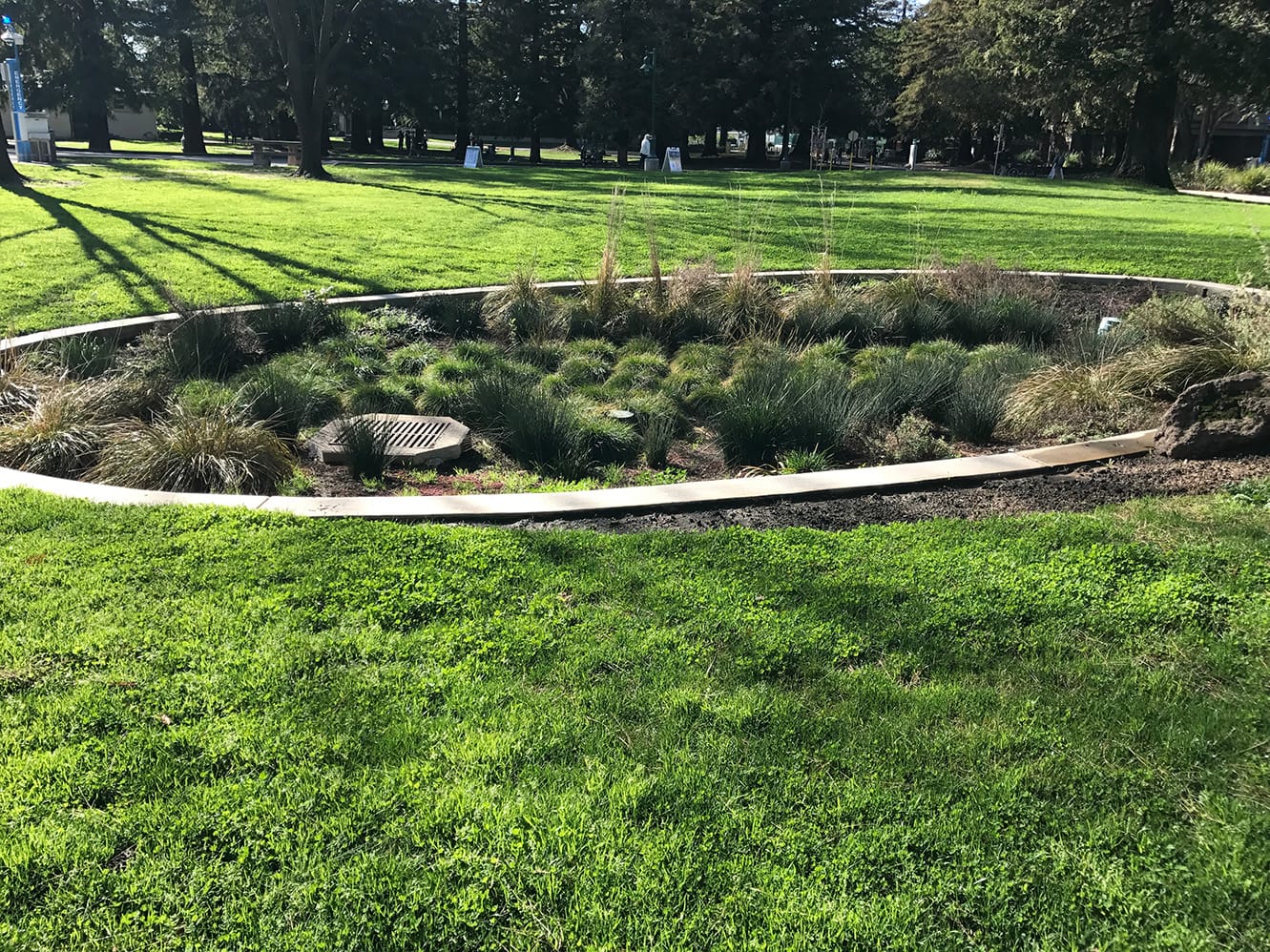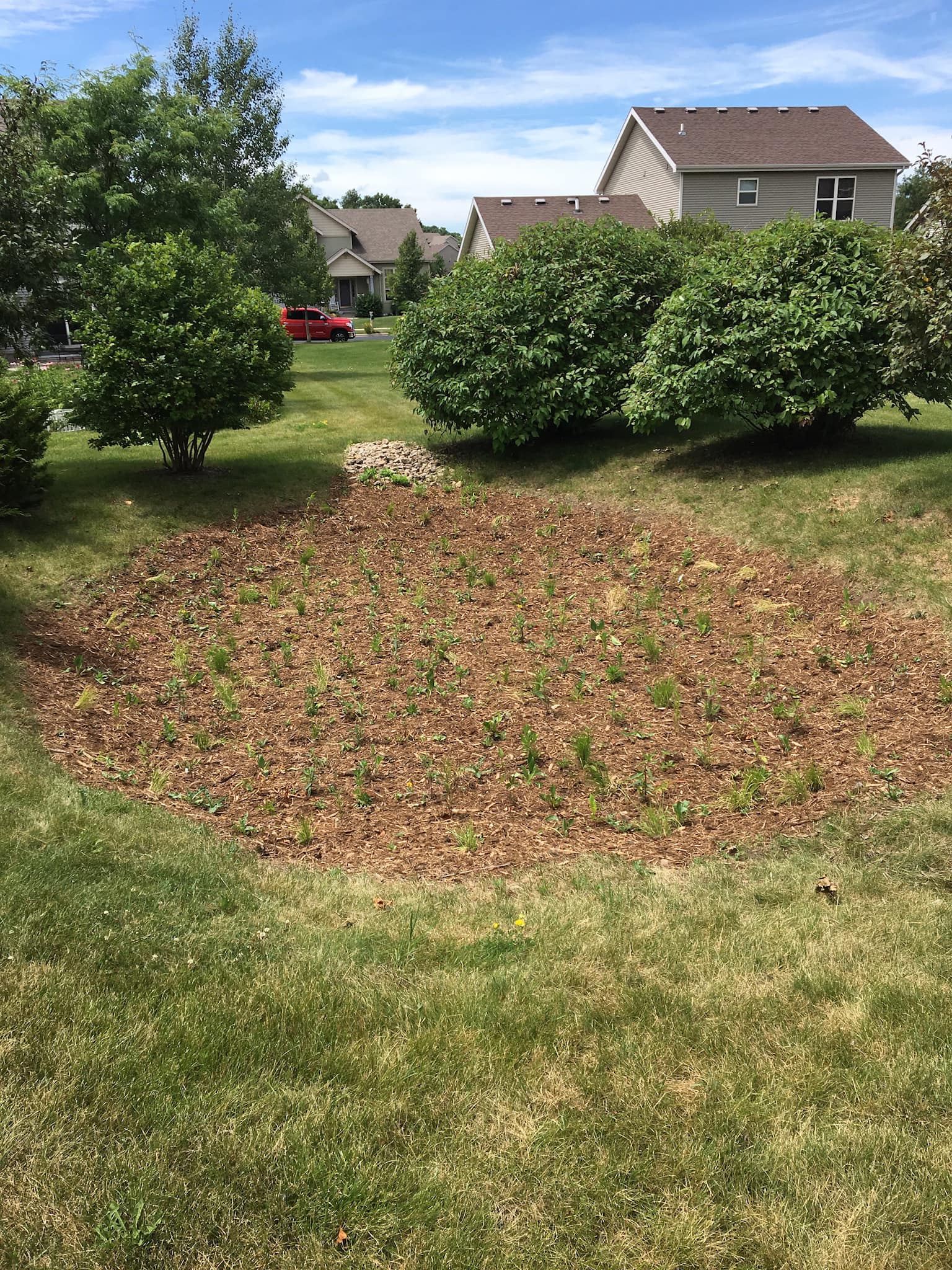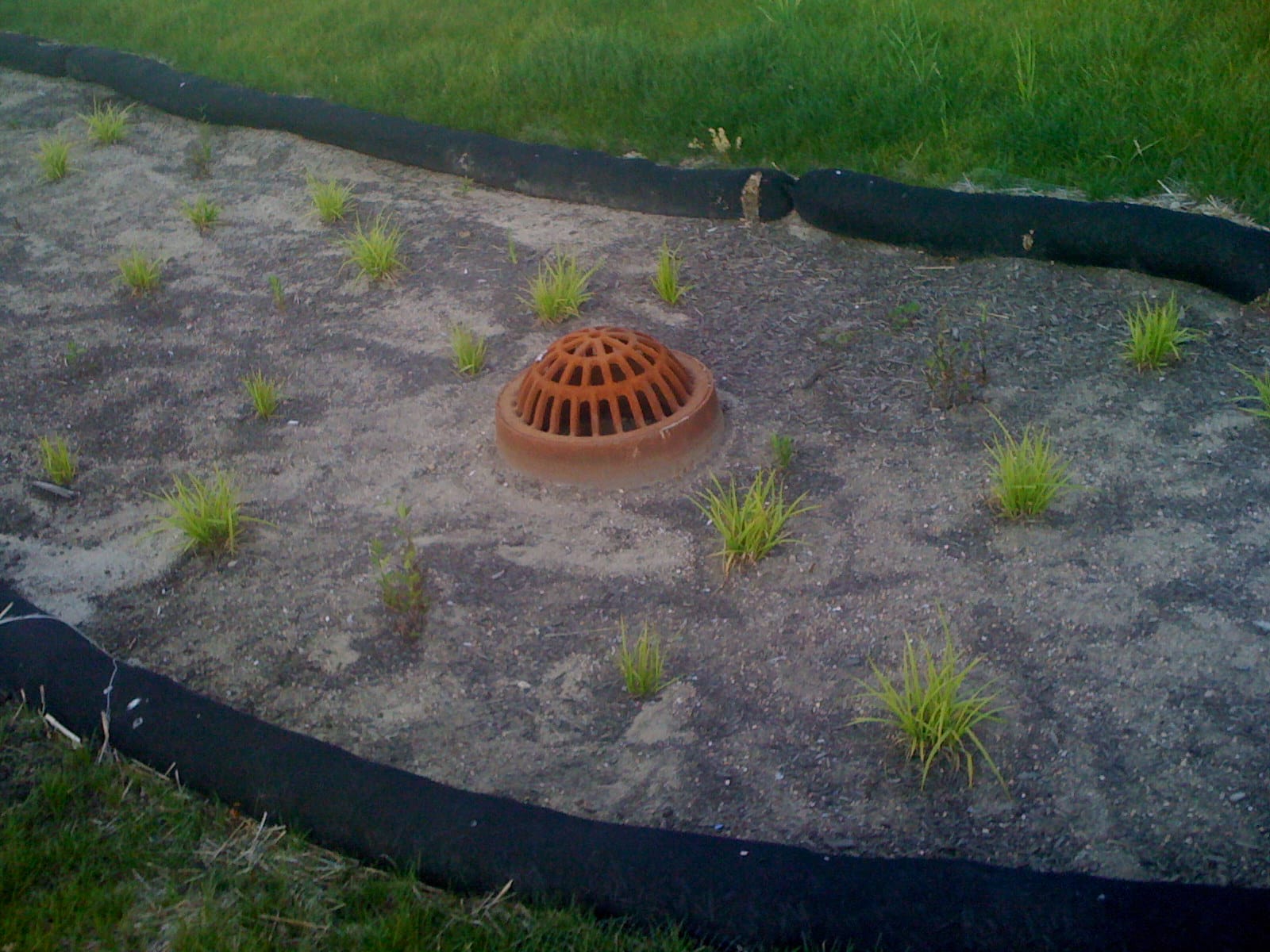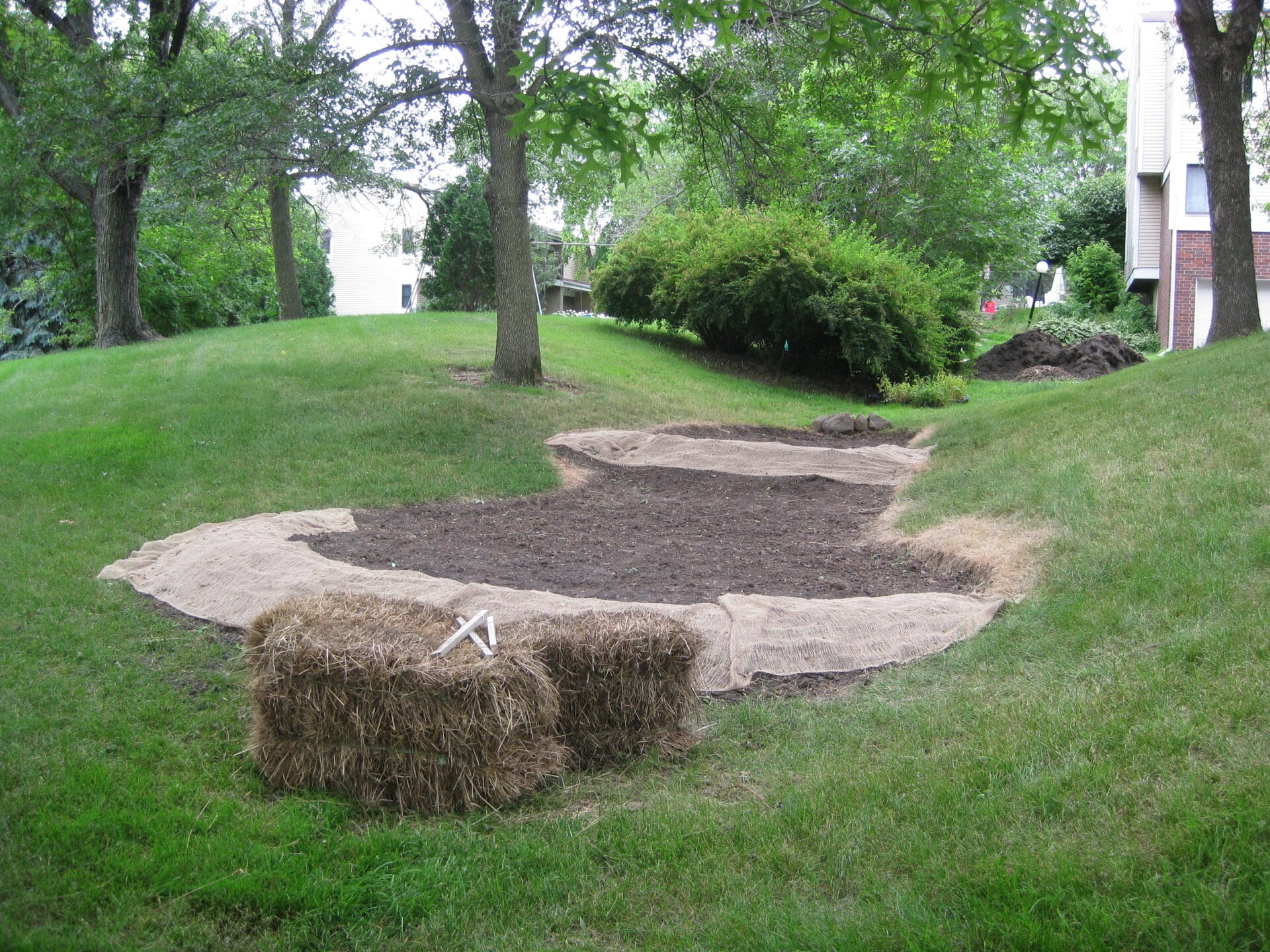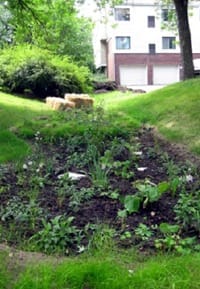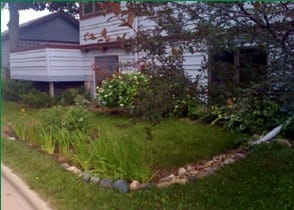WHAT IS A RAIN GARDEN?
A rain garden is simply a shallow depression in your yard that is planted with native wetland or wet prairie wildflowers and grasses. It is designed to naturally collect water that runs off from your roof or is discharged from your sump pump.
Rain gardens are gaining popularity for three reasons:
- Rain gardens make good use of stormwater runoff, conserving precious water supplies and helping protect water quality in downstream lakes and streams.
- Rain gardens are planted with beautiful, hardy, low-maintenance native perennial plants.
- Rain gardens provide food and shelter for birds, butterflies, and beneficial insects, such as mosquito-devouring dragonflies!
1. Dig a shallow depression with a level bottom, as large in circumference as you’d like.
2. Direct your downspout or sump pump outlet to your rain garden, either by digging a shallow swale — a linear depression designed to channel water — or by routing it through a buried 4″ PVC pipe.
3. Plant the native plants recommended in one of EC3’s Rain Garden Kits.
4. Water your planting every other day for the first few weeks, until plants are growing and well-established. Once your native rain garden plants are established, they’ll thrive without additional watering. Fertilizers are not necessary.
Pick a naturally low spot in your yard — at least 10 feet from your house — and direct water from your downspout or sump pumps into it. Full sun is best, but make sure the site gets at least a half-day of sunlight. During heavy rains, your rain garden may fill up and overflow. Make sure this overflow drainage follows the drainage pattern originally designed for your lot. Test this by filling your depression with a garden hose and watching the overflow. If needed, dig a shallow swale to direct overflow water toward the street, road, or other downhill areas away from buildings.
A depression of 2-6″ will suffice. Slope the sides gradually from the edge to the level bottom. Deeper rain gardens in heavy clay soils will hold water longer. Test this with a garden hose. French drains can be installed to aid infiltration.
Hand weed biweekly until native plants are established.
Avoid using lawn fertilizers near the rain garden. Fertilizers will stimulate weed competition without benefitting your native plants.
Don’t worry about mosquitoes. Most rain gardens will not hold water long enough for mosquitoes to reproduce. Even so, dragonflies, swallows, and other natural control processes will keep them in check.
Come spring, mow and remove dead vegetation, or simply burn it off if your fire department regulations allow it. Native plants thrive under fire management.
Place natural rocks, bird houses, a bench, or garden ornaments in and around your rain garden. Be creative! You’ll learn and have fun in designing your own backyard landscape.
Add plenty of native sedges and grasses to physically support taller species and provide a visually textured background that ties the garden together.

